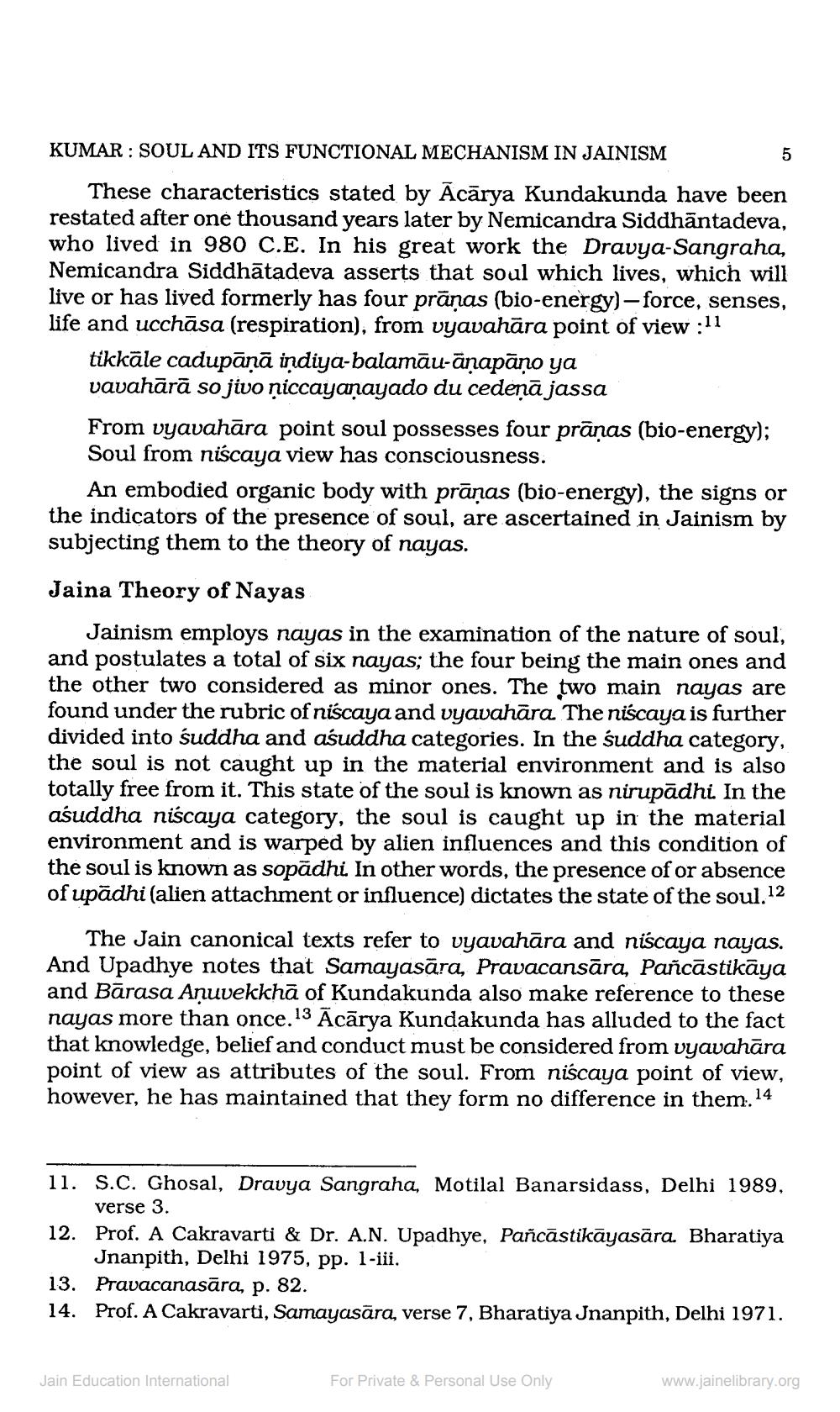Book Title: Jain Journal 2000 07 Author(s): Jain Bhawan Publication Publisher: Jain Bhawan Publication View full book textPage 7
________________ KUMAR : SOUL AND ITS FUNCTIONAL MECHANISM IN JAINISM These characteristics stated by Ācārya Kundakunda have been restated after one thousand years later by Nemicandra Siddhāntadeva, who lived in 980 C.E. In his great work the Dravya-Sangraha, Nemicandra Siddhātadeva asserts that soul which lives, which will live or has lived formerly has four prānas (bio-energy)-force, senses, life and ucchāsa (respiration), from vyavahāra point of view :11 tikkäle cadupāņā indiya-balamāu-ānapāņo ya vavahārā so jivo ņiccayaņayado du cedeņā jassa From vyavahāra point soul possesses four prāņas (bio-energy); Soul from niscaya view has consciousness. An embodied organic body with prānas (bio-energy), the signs or the indicators of the presence of soul, are ascertained in Jainism by subjecting them to the theory of nayas. Jaina Theory of Nayas Jainism employs nayas in the examination of the nature of soul, and postulates a total of six nayas; the four being the main ones and the other two considered as minor ones. The two main nayas are found under the rubric of niscaya and vyavahāra The niscaya is further divided into suddha and asuddha categories. In the suddha category, the soul is not caught up in the material environment and is also totally free from it. This state of the soul is known as nirupādhi In the asuddha niscaya category, the soul is caught up in the material environment and is warped by alien influences and this condition of the soul is known as sopādhi In other words, the presence of or absence of upādhi (alien attachment or influence) dictates the state of the soul.12 The Jain canonical texts refer to vyavahāra and niscaya nayas. And Upadhye notes that Samayasara, Pravacansāra, Pañcāstikaya and Bārasa Aņuvekkhā of Kundakunda also make reference to these nayas more than once. 13 Ācārya Kundakunda has alluded to the fact that knowledge, belief and conduct must be considered from vyavahāra point of view as attributes of the soul. From niscaya point of view, however, he has maintained that they form no difference in them.14 11. S.C. Ghosal, Dravya Sangraha, Motilal Banarsidass, Delhi 1989, verse 3. 12. Prof. A Cakravarti & Dr. A.N. Upadhye, Pañcāstikāyasāra. Bharatiya Jnanpith, Delhi 1975, pp. 1-iii. 13. Pravacanasāra, p. 82. 14. Prof. A Cakravarti, Samayasāra, verse 7, Bharatiya Jnanpith, Delhi 1971. Jain Education International For Private & Personal Use Only www.jainelibrary.orgPage Navigation
1 ... 5 6 7 8 9 10 11 12 13 14 15 16 17 18 19 20 21 22 23 24 25 26 27 28 29 30 31 32 33 34 35 36 37 38 39 40 41 42 43 44 45 46 47 48 49 50
